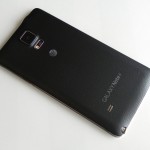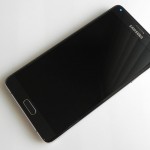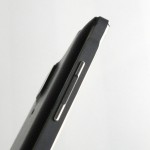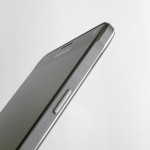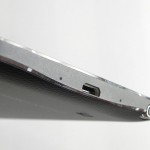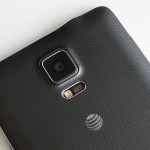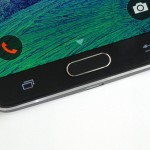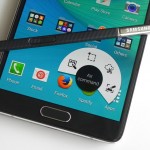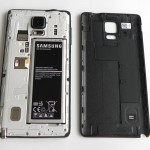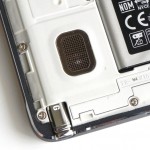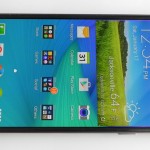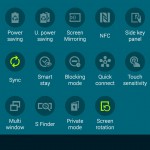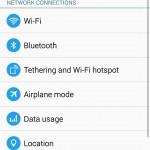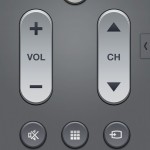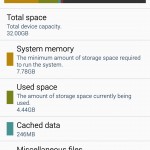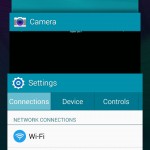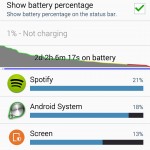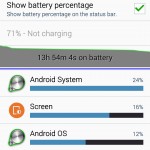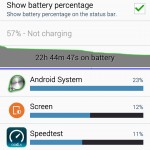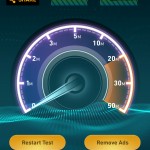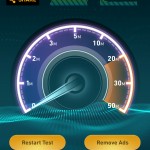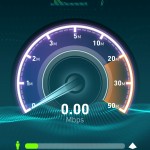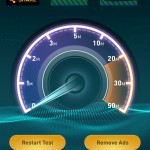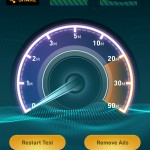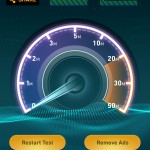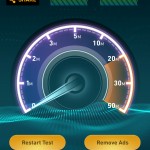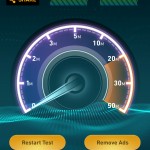It’s hard to believe that there was once a time, just a short while ago, where phablets were seen as impossible and impractical to use. Now, you see them everywhere. Samsung’s Galaxy Note 4 is their best Note to date, featuring long-lasting battery life, good performance, all in a design that finally uses more premium materials than before.
Unboxing Video
Video Review
Availability and Price
Made first available in October 2014, the Galaxy Note 4 is available for all major U.S. carriers. I’ll be focusing specifically on the AT&T version, but do remember that the hardware across all the devices are practically identical.
Pricing on AT&T is typical of other smartphones, so it can be had for $299.99 with a standard 2-year contract or $825.99 outright. You can also pay for it in monthly installments at $41.30 per month for 20 months, $34.42 per month for 24 months, or $27.54 per month for 30 months. For those taking the contract route, you can often pay less than the $299.99 price, depending on where you shop.
Specs
Samsung’s flagship devices are typically packed with power, and the Galaxy Note 4 is no exception. Here’s a quick rundown of the specs:
- 5.7-inch 1440×2560 (quad-HD Super AMOLED) display @ 515 pixels per inch
- 2.7GHz quad-core Qualcomm Snapdragon 805 CPU + 3GB RAM
- 3,220mAh user-removable battery with adaptive fast charging
- 32GB internal storage (up to 128GB via microSD)
- 4G LTE/3G/2G support
- 802.11 a/b/g/n/ac/r Wi-Fi, Bluetooth 4.0, NFC
- Android 4.4 “KitKat”
- 16MP rear-facing camera (720p120, 1080p60, 4K30 video recording) with optical image stabilization
- 3.7MP wide-angle front-facing camera
- 6.04″ tall, 3.09″ wide, 0.33″ thick
Design and Hardware
The Note 4 is the first Note smartphone that uses metal for the phone’s band, which ultimately gives the device a solid, premium feel. If you were a fan of plastic, then don’t worry, since the back cover is still just that. Speaking of which, it can come apart fairly easily, exposing the removable battery, micro-SIM slot, and microSD card slot. When you’re done, there are several points of contact that keep the back cover secured. The cover is also textured with a soft-touch/satin material, thus keeping visible fingerprints and scratches to a minimum. It also feels nice and is fairly grippy.
Since we’re talking about the back, let’s keep going. There, you’ll find the camera, LED flash and heartbeat sensor. in addition, there’s some AT&T and Galaxy Note 4 branding, with a small speaker below both of those.
There are four buttons on the Galaxy Note 4 (six if you count the soft-touch navigation buttons). The first is the main button, found on the front, just below the screen. The power button is on the right, while the two volume buttons are on the left side. All of the physical buttons have a light but satisfying click/feel to them. Samsung still hasn’t gone the virtual button route (which I prefer, as you get a little more room on the screen for things you actually want to see). To the right of the main button is the back button, while to the left is the dedicated multitasking key. Long-pressing the multitasking key will instead act as the traditional menu key.
The front houses the earpiece, front-facing camera, some sensors, the beautiful 5.7-inch display, as well as an LED indicator (for notifications and other things). The glass is ever-so-slightly curved on the sides, which gives the device some more design flare that I particularly enjoy seeing.
Interestingly, there seems to be a minor gap between the front glass and the metal frame. Because of this, debris can get between the two, and it’s quite difficult to clean. Unless you use a case, this can become quite annoying to see and just doesn’t seem right.
Speaker
One thing that Samsung often overlooks is the speaker, often placed on the back of their devices. Because of its placement, it’s generally not recommended for long periods of listening; external speakers or headphones are recommended. That’s not to say that it’s completely unusable, because it certainly has its place.
The speaker itself can get quite loud, and doesn’t clip or start crackling at loud volumes. Audio quality is just okay, being fairly clear. Speakerphone calls? It’ll work just fine. Music? It’ll work just fine for that, too though, again, just not for long periods of listening.
Display
Back in the day, Samsung’s smartphone displays were typically oversaturated and emphasized certain colors, such as red or green. Things have improved greatly since then, and the display on the Note 4 is the best one I’ve seen for them thus far. Viewing angles are perfect, and the feeling of the glass is nice. It’s also fairly resistant to scratches (though I will always recommend screen protectors, regardless of how strong the screen may be). Colors are well saturated, and makes Android look good, though they aren’t oversaturated like their previous screens. It’s just an all-around excellent display, that also happens to work relatively well outdoors. Its maximum brightness is also quite high, while its lowest brightness can get comfortably low for when you’re in the dark.
Software, Apps and Features
(The above screenshots have been slightly downsized due to their high resolution and file sizes.)
The device runs Android 4.4, better known as KitKat, with Samsung’s TouchWiz overlay. Samsung’s phones are known for being a bit bloated, especially when it comes to features that many people might not even use. They’ve gotten a little better over the years, but I still feel as though the Note 4 is feature overload. Thankfully, you can disable a lot of what you don’t think you’ll use. You can also disable the majority of the preinstalled applications (most notably the ones that come from AT&T).
The Galaxy Note wouldn’t be labeled a Note smartphone if it wasn’t for its included S Pen, a stylus that offers some extra features. As soon as you take it out, an “air command” prompt will show up on the screen, allowing you to access action memo (a quick writing/note taking app), smart select (you can highlight something on your screen and turn it into editable text), image clip (select a certain area of the screen and save it as an image), and screen write (takes a full screenshot and allows you to doodle onto it). Using the S Pen is an interesting experience, and one that works quite well, but I didn’t find myself using it as much as I would’ve liked.
Like the Galaxy S5, the Note 4 features a heartrate sensor on the back of the device, located next to the LED, which itself is located below the camera. You can use the sensor from the included S Health application, an all-in-one fitness tracking app that’s geared towards those who want to keep track of steps, calories burned, etc.
A few of the other notable features include multi window support (for running smaller versions of apps so that you can run more than one at once), one-handed mode (shrinks the screen), and easy mode (for those who are slowly getting into smartphones or don’t want to be overwhelmed by what they have to offer).
Lastly, also like the Galaxy S5, included is a fingerprint sensor, integrated into the main button on the front. You can use it for basic tasks, such as unlocking your smartphone, but fingerprint support for Android is still fairly limited. Its main uses are for unlocking the screen, signing into websites, using the Samsung account, and paying for things with PayPal. When using it, you have to make sure that you swipe it slowly in addition to swiping vertically across the entire button. Unless you make sure you do those things, your fingerprint most likely won’t be registered. It’s still a nice feature to have and can work if you keep those things in mind.
TouchWiz as a whole is a colorful and generally straightforward overlay for Android. There are a lot of options when it comes to customizing Android for you, even more than what you’d get with a stock version of Android. The tabbed settings app can still make finding certain things sometimes difficult, though the included search box helps. The animations are fairly snappy, and is detailed a bit more in the performance section below.
Performance
Despite having a fast, high-clocked quad-core CPU, Samsung’s TouchWiz isn’t without its flaws. Things can surely be done on Samsung’s end to further optimize things, but the animations aren’t always smooth or consistent. That’s less noticeable compared to previous devices, but it’s still not a silky smooth experience that you’d find on other smartphones, Android or not. But still, it’s a relatively minor thing to make note of.
Continuing with optimizations, I wish that other things were quicker. For instance, hitting the multitasking button results in having to wait for just a moment before the backgrounded apps drawer comes into view, whereas other devices do this instantly. Pressing the home button results in something similar, where you have to wait for just a moment before it goes to the main home screen. Again, these are minor things to make note of, and ultimately isn’t something that should keep people away by any stretch of the imagination.
In general, you can expect applications to launch quickly and games to perform well. I didn’t game too much, but whenever I did, I was just happy with the frame rates (though things could still be more consistent, which may be down to the optimizations by the game’s developers). As far as launching apps and using them goes, I think that it’s hard to get any faster than things are right now, basically hitting the performance ceiling.
Battery Life
Despite being filled with features, the battery keeps the smartphone going for quite some time. With moderate to heavy usage, I can easily get through the entire day (from about 7AM to 11PM). If I’m a bit more conservative, or if I try using one of the power saving modes, I can get through two or maybe three. There’s also an “ultra” power saving mode (in addition to the normal one, which reduces CPU performance and can make the screen grayscale), which heavily restricts what you can do (it keeps the basics, such as sending texts and making calls) in favor for some insane added battery life numbers. It has the ability to make a low battery last hours and hours, ideal for those who know they’ll be away from a charger and are low on battery.
But if you are near a charger, the Note 4 has the ability to get a 50% charge in just 30 minutes. A full charge takes close to 2 hours. One thing to note is that the 30 minutes is when the screen is completely off. It’s still very impressive, and is something that most smartphones should be able to replicate moving forward.
Call and Cellular Network Performance
Call quality and data speeds can vary wildly by location, even by as much as going down the block. In general, my call quality on AT&T was just fine. The device technically supports voice-over-LTE, but that isn’t activated in my area. The three microphones keep audio quality from my end good for others to listen to, even when on speakerphone calls.
Data speeds on LTE were generally usable, averaging 15Mbps down and 10Mbps up. There were a very heavily-congested areas where I was able to consistently be under 0.5Mbps down and up, to no fault of the device. Like other AT&T smartphones, AT&T removed the ability to manually select which data network you’d like to use (4G LTE, 3G HSPA+, or EDGE/GPRS). You’ll essentially use whatever is available to you given where you are. There are instances where 4G LTE is crowded to where dropping back to HSPA+ could provide a faster data experience, but that’s just not possible without rooting or installing custom ROMs, neither of which I had any desire to do in general.
Camera Quality
cameraPhotos
Samsung’s cameras are known for being quite good, and that’s certainly the case with the Galaxy Note 4. The 16MP rear-facing camera can make for some great looking shots, especially outdoors, while nighttime/low-light shots could be a bit better (but they aren’t bad by any means). Focusing is fast, and the optical image stabilization certainly helps for both photos and videos. Video quality is also good, and being able to record 1080p video at 60 frames per second is personally something I like. It can also record 4K video, but isn’t too useful for those without 4K displays, or for those who don’t plan on editing their videos.
The main problem I had isn’t with the camera itself, but with the software. It’s fairly slow to launch, and sometimes loading all of the camera options actually results in the spinning progress bar to appear for a few moments. You can adjust quite a few options, such as the resolution, exposure, ISO, white balance and more. This could be overwhelming for many, but you do have those options.
Conclusion
The battle of the large-screened smartphones is constantly raging, and Samsung certainly has the top contender right now. The Galaxy Note 4 is fast, looks great, has a great feature set, and is overall a great device to use. Of all the previous Samsung smartphones that I reviewed over the years, this is my favorite. If you’re considering a phablet, the Note 4 is easily recommended.
Feel free to follow Brian and Gadget Unit on Twitter.
